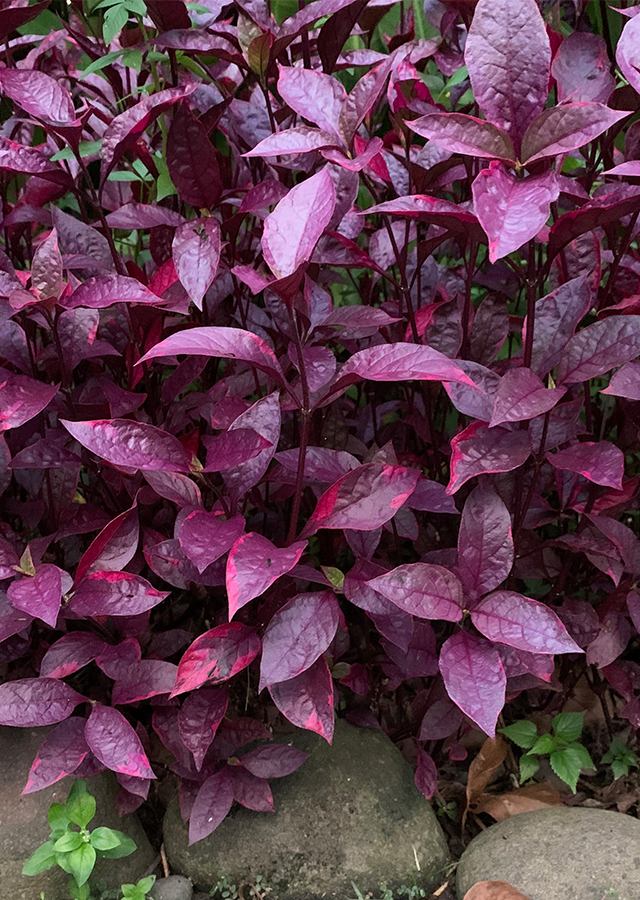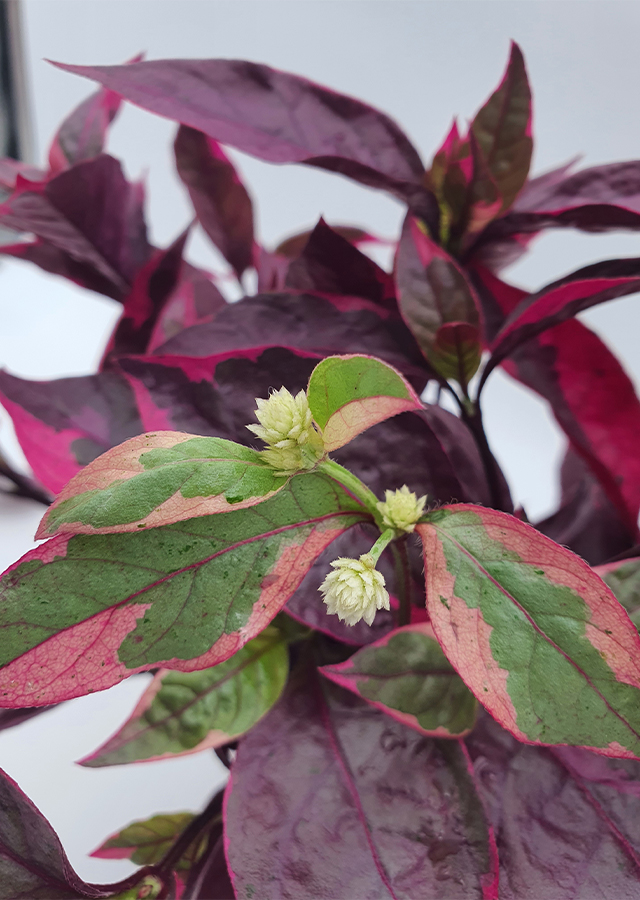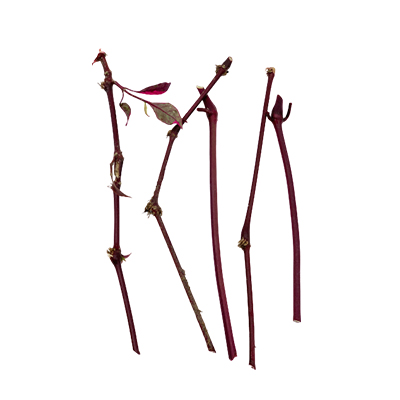Climbing wool plant
Ouret sanguinolenta (L.) Kuntze
Amaranthaceae
Location in our garden
Principal



Synonym
Achyranthes sanguinolenta L.
Aerva sanguinolenta (L.) Blume
Ouret scandens (Roxb.) Hiern
Habitus
Herbaceous. Perennial, erect or somewhat clambering, dioecious or polygamous herbs up to 200 cm tall
Part Used
Leaves
Seeds
Roots
Growing Requirements
Full Sunshine
Habitat
Grassland
Overview
Native to Southern China, Pakistan, India, Bhutan, Nepal, Myanmar, Thailand, Vietnam, Malaysia, Indonesia, Philippines. The plant is harvested from the wild for local use as a medicine. It is sometimes cultivated as an ornamental, especially the form with a purplish tinge.
Vernacular Names
Mông gà (Vietnamese), Khruea khaao tok (Thailand), Do:k khaix ped (Laos).
Agroecology
Locally common in abandoned fields, brushwood and hedges, at elevations at elevations as low as 150 m up to 2,300 m.
Morphology
- Stem - erect, branched, stem and branched are round and channeled.
- Leaves - Leaves ovate-elliptic, oblong, or lanceolate, 1.5-8 × 0.5-3.5 cm, margin entire, densely whitish-woolly on both surfaces.
- Inflorescence - an axillary and terminal spike, forming a lax raceme or terminal panicle.
- Flowers - small, usually bisexual but sometimes unisexual, solitary in the axil of persistent bracts, subtended by 2 bracteoles, tepals hairy abaxially, white or pink.
- Fruit - a much compressed utricle, about 1 mm in diameter, bursting irregularly, 1- seeded.
- Seed - reniform, shiny black.
Cultivation
Propagation is by stem cuttings.
Chemical Constituents
- Tannins, flavonoids, terpenoids, sphingolipids, polyphenolic compounds and betacyanins.
Traditional Medicinal Uses
- As diuretic (valued in cases of lithiasis and catarrh of the bladder, and for prostatic ailments) and as vermifuge.
- It is used in treatment of, rheumatic arthritis and pain in muscles.
- It exhibits diuretic, anti-inflammatory, antihyperglycemic, and anti-leishmania activities.
- The whole plant is used as a tonic, sedative and dermatitis. The decoction made from young branches of the plant used internally against haematuria and irregular or painful menstruation.
- The roots are used for dysentery and paste of the roots is applied externally for headache.
- In India the dried plants are used against diabetes and malaria.
- The seeds are used against bronchitis.
- Leaves and roots of the plant have been used for body pain and the paste of the leaves and roots is applied to the affected area
- Decoctions of young branches are used internally against haematuria and irregular or painful menstruation.
Part Used
Reference Sources
http://www.efloras.org/florataxon.aspx?flora_id=2&taxon_id=200006972 diakses tanggal 04 April 2022. https://www.flowersofindia.net/catalog/slides/Climbing%20Wool-Plant.html diakses tanggal 04 April 2022.


